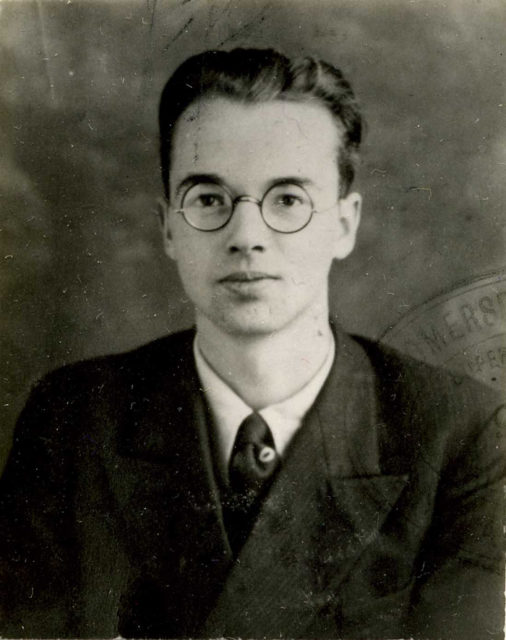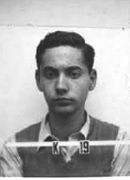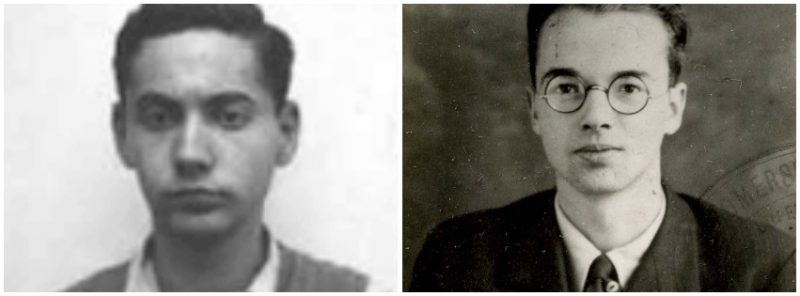Today, the army uses spies to gain intelligence on other countries and their people. Without these spies, information would never be found about the enemies each country was trying to defeat. Spies were even more useful and prominent during the Cold War. However, the worst thing to happen to these spies was to get caught by their enemies – these men and women were most likely tortured until they would give up their secrets.
During the 1940’s, the Soviet Union launched an espionage effort to uncover military and defense secrets of the United States and Britain, despite having been their an ally during World War II.
Just within days of Britain’s decision to research building an atomic bomb in 1941, an informant in the British civil service had notified the Soviets. The same thing happened in the United States when their secret plan to build an atomic bomb, called the Manhattan Project, was revealed to the Soviet spy ring. This was even before the FBI knew about the secret program’s existence.
Not even four years after the United States dropped the atomic bombs on Japan in August 1945, the Soviet Union had detonated its own in August 1949, taking everyone by surprise. Espionage historian, John Earl Haynes, explained that many Americans and Britons had decided to sell their nations’ atomic secrets because they could have been “ideologically motivated” or “enamored of communist beliefs.”
For many years, it was unknown just how deep the Soviet spying went. However, there was a major breakthrough in 1946 when the United States and Britain worked together to decipher the code Moscow used to send secret telegraphs. The two countries dubbed the de-coding project Venona. In fact, the project remained a secret until 1995, because the government did not want to reveal that they had cracked the Russian code. The Venona evidence couldn’t be used in court, but the government hoped that it would trigger investigations that would nail the suspects who were involved in spying. As the Venona decryption got better in the late 1940s and early 1950s, it blew the cover off several spies.
Here are some of the spies who were caught:
-
John Cairncross
Cairncross was actually considered the first atomic spy. He was later identified as one of the Cambridge Five, a group of upper-middle class men who had met at Cambridge University in the 1930s. They became rather passionate communists and eventually turned into Soviet spies during World War II and into the 1950s.
Cairncross was originally the secretary to the chairman of Britain’s scientific advisory committee. Because of that, he had access to a high-level report in the fall of 1941 that had confirmed the possibility of a uranium bomb. He ended up leaking information to the Moscow agents. In 1951, British agents closed on other members of the Cambridge spy ring. Cairncross was interrogated after documents in his handwriting had been discovered in a suspect’s apartment.
Unfortunately, he was not charged; he was asked to resign and keep quiet instead. He ended up moving to the United States where he taught French literature at Northwestern University. In 1964, he was questioned again and admitted to spying for Russia against Germany in World War II, but he denied giving any information harmful to Britain.
He went to work for the United Nations Food and Agriculture Organization in Rome and later lived in France. He then returned to England for a few months before he died in 1995. He took his information to the grave with him. However, in the late 1990s, when Russia was under its new democracy, information was made public. Russia’s KGB files from the last 70 years revealed Cairncross was an agent who had provided the Soviets major secrets of the British government in their work of developing atomic energy.
-
Klaus Fuchs

Police photograph of Physicist Klaus Fuchs. Source
This man is considered one of the most important atomic spies in history. He was a primary physicist on the Manhattan Project and the lead scientist at Britain’s nuclear facility by 1949. Just a few weeks after the Soviets exploded their atomic bomb in August 1949, a Venona decryption of a 1944 message revealed information that described important scientific processes related to the construction of the A-Bomb. This message had been sent from the United States to Moscow. FBI agents had identified Fuchs as the man who sent it.
Fuchs was born in Germany in 1911 and he had joined the Communist Party as a student. He fled to England during the rise of Nazism in 1933. There, he attended Bristol and Edinburgh universities, where he did well in physics. Because he was a German national, he was interned for several months in Canada but returned and was cleared to work on atomic research in England.
He became a British citizen in 1942; he had already contacted the Soviet Embassy in London where he volunteered as a spy. He was then transferred to the Los Alamos lab and soon began to hand over information about the bomb, including sketches and dimensions. When he returned to England in 1946, he went to work at Britain’s nuclear research facility, passing on to the Soviet Union information on creating a hydrogen bomb.
In December 1949, authorities, alerted by the Venona cable, questioned him. In a matter of weeks, Fuchs had confessed everything. He was tried and sentenced to 14 years in prison. After serving nine years, he was released to East Germany where he continued to work as a scientist. He died in 1988.
-
Theodore Hall

Theodore Hall ID badge Source
It was believed that Fuchs was one of the most significant spies at Los Alamos, however, the secrets Ted Hall had given to the Soviets proved to be critical. Hall was a Harvard graduate at 18 years old. At 19, he was the youngest scientist on the Manhattan Project in 1944. Unlike Fuchs and the Rosenbergs, Hall got away with everything. He had worked on experiments for the bomb that was dropped on Nagasaki, which was the same type that the Soviets detonated in 1949. As a boy, Hall had witnessed his family suffer during the Great Depression. His brother had advised him to drop his family’s name, Holtzberg, in order to escape anti-Semitism.
The harsh world at the time affected Hall, who ended up joining the Marxist John Reed Club upon the arrival at Harvard. After he was recruited to work at Los Alamos, the development of the bomb haunted him. He constantly thought about how to spare humanity against the devastation of nuclear power. He was on leave in New York in October 1944 when he decided to contact the Soviets, volunteering to keep them updated on the bomb research.
With the help of his Harvard colleague, Saville Sax, Hall used coded references to Walt Whitman’s Leaves of Grass to set up meeting times. In December 1944, Hall delivered the first atomic secret from Los Alamos. The update was about the creation of the plutonium bomb. In the fall of 1946, he had enrolled in the University of Chicago where he worked on his Ph.D. In 1950, the FBI turned their attention on him.
His real name had surfaced in a decrypted message, but Fuch’s courier, Harry Gold, who happened to be in prison, couldn’t identify him. Because of that, Hall never went to trial. After he followed a career in radiobiology he moved to Great Britain and worked as a biophysicist until his retirement. In 1995, the Venona declassification confirmed his spying from five decades earlier. He died in 1999.
